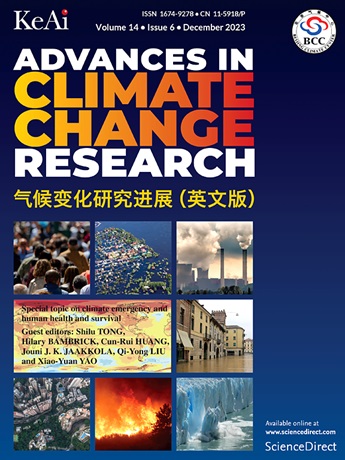Mapping of the susceptibility of China‒Russia crude oil pipelines to water damage in permafrost regions in Northeast China
IF 5.2
1区 地球科学
Q1 ENVIRONMENTAL SCIENCES
引用次数: 0
Abstract
In permafrost regions, climate warming and extreme precipitation events, combined with rugged local terrains, pose considerable threats of water damage to buried crude oil pipelines. However, the susceptibility to water damage in these areas has received limited attention and research. Aiming to evaluate the susceptibility to water damage (STWD) of the China‒Russia Crude Oil Pipelines (CRCOPs) I and II, random forest (RF) algorithms, correlation analysis of influencing factors and on-site surveys were employed. The assessment, based on RF algorithms, field survey data from 2019 to 2022 and 14 geographically related factors, reveals that approximately 14.5% of the study area demonstrates high STWD, indicating a generally low risk of STWD across most segments of the CRCOPs. The pipeline segments between Wu’erqi–Jagdaqi and Jingsong–Xinlin display the highest STWD. Areas with high STWD typically experience ample precipitation, flow accumulation in flat, low-lying terrains, low surface roughness, over unconsolidated deposits and warm (>−1 °C) Xing’an (hemiboreal) permafrost and proximity to rivers. This study not only enhances theoretical understanding of mitigating water damage to pipeline foundations in cold regions but also offers important technical insights for the sustainable operation of these lifeline infrastructures. Future research should focus on continuous monitoring of pipeline foundation soil safety, improving numerical models for pipeline river crossing evaluations and refining water damage risks assessment through deep learning-based models.
中国东北多年冻土区中俄原油管道水害敏感性制图
在永久冻土区,气候变暖和极端降水事件,加上当地崎岖的地形,对埋地原油管道造成了相当大的水破坏威胁。然而,这些地区对水害的易感性受到的关注和研究有限。为评价中俄原油管道(CRCOPs)ⅰ和ⅱ的水损敏感性,采用随机森林(random forest)算法、影响因素相关分析和现场调查。基于RF算法、2019年至2022年的实地调查数据和14个地理相关因素的评估显示,大约14.5%的研究区域显示出高STWD,这表明在crcop的大多数段中,STWD的风险普遍较低。乌尔旗—贾格达旗和靖松—新林段管道的STWD最高。高STWD地区通常降水充足,水流聚集在平坦、低洼的地形上,表面粗糙度低,在松散的沉积物上,以及温暖(>−1°C)的兴安(半北方)永久冻土上,靠近河流。该研究不仅提高了对减轻寒冷地区管道基础水害的理论认识,而且为这些生命线基础设施的可持续运行提供了重要的技术见解。未来的研究应集中在管道基础土壤安全的持续监测,完善管道过江评价的数值模型,并通过基于深度学习的模型完善水损风险评估。
本文章由计算机程序翻译,如有差异,请以英文原文为准。
求助全文
约1分钟内获得全文
求助全文
来源期刊

Advances in Climate Change Research
Earth and Planetary Sciences-Atmospheric Science
CiteScore
9.80
自引率
4.10%
发文量
424
审稿时长
107 days
期刊介绍:
Advances in Climate Change Research publishes scientific research and analyses on climate change and the interactions of climate change with society. This journal encompasses basic science and economic, social, and policy research, including studies on mitigation and adaptation to climate change.
Advances in Climate Change Research attempts to promote research in climate change and provide an impetus for the application of research achievements in numerous aspects, such as socioeconomic sustainable development, responses to the adaptation and mitigation of climate change, diplomatic negotiations of climate and environment policies, and the protection and exploitation of natural resources.
 求助内容:
求助内容: 应助结果提醒方式:
应助结果提醒方式:


